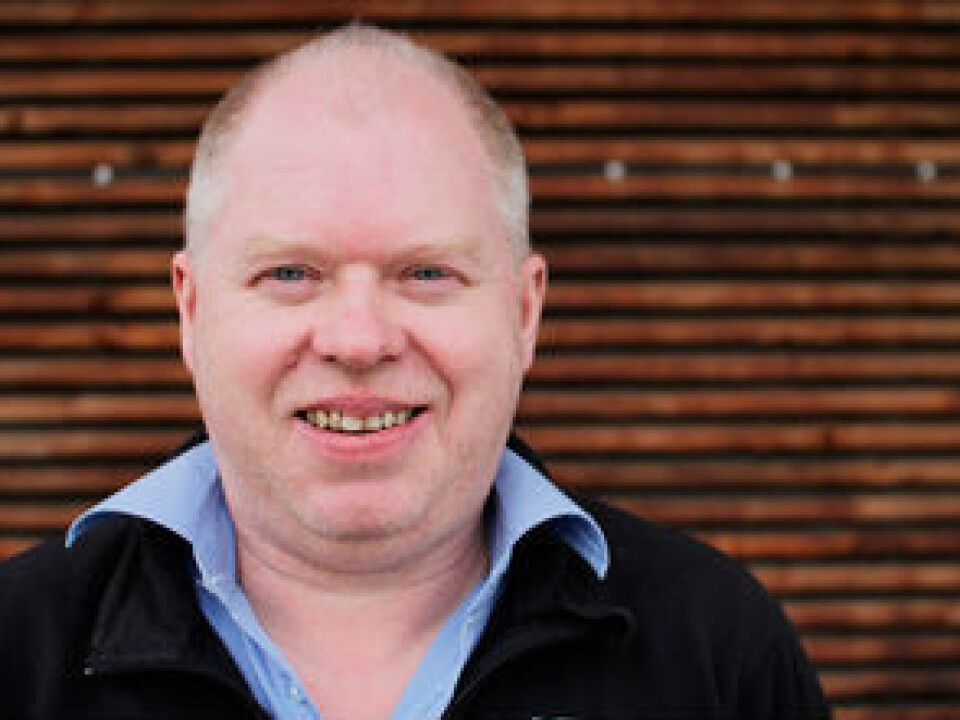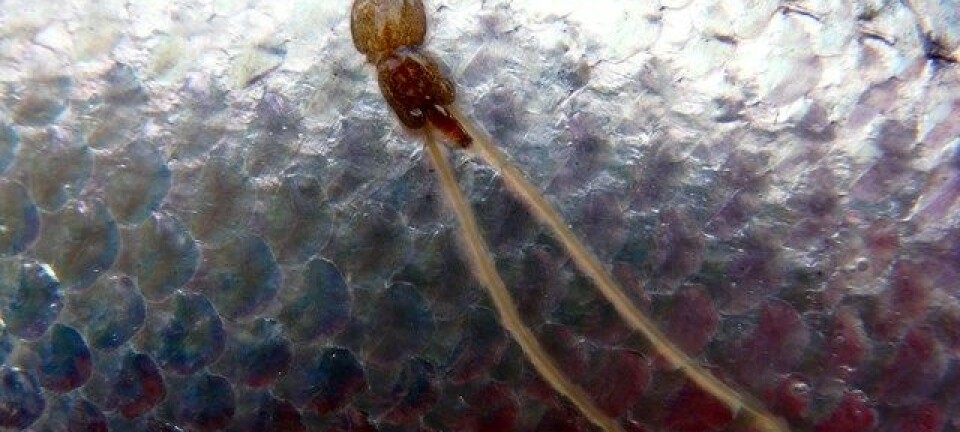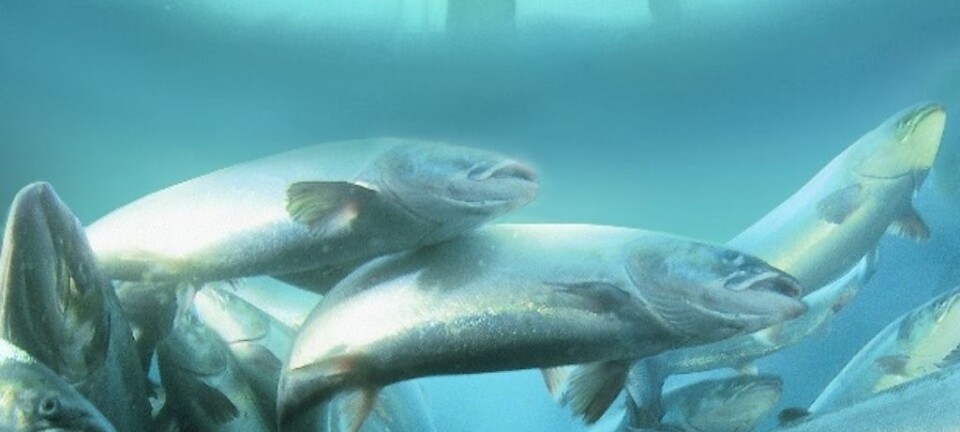This article was produced and financed by University of Bergen

Tailor-made medicine to fight the salmon louse
The salmon louse has become ever more resistant to drugs. The Sea Lice Research Centre in Bergen works to find new solutions to fight it.
Denne artikkelen er over ti år gammel og kan inneholde utdatert informasjon.
Every year, Norwegian fish farmers produce more than one million tonnes of salmon with a combined value of more than NOK 30 billion (EUR 3.7 billion). Traditionally the salmon louse used to be a problem for wild salmon, but has increasingly become a threat to the farmed salmon industry.
In autumn 2013, researchers at the Sea Lice Research Centre (SLRC) at the University of Bergen (UiB) discovered that some strains of lice have become resistant to all available drugs.
“We may enter into a situation where all lice become resistant to treatment. That is why we try to stay ahead of developments and to prevent lice from becoming resistant before new drugs are developed,” says Professor Frank Nilsen at UiB’s Department of Biology and director of SLRC.
Race against resistance
Developing new drugs is the main method for keeping lice under control. Over the past decades, researchers have developed several drugs that have been used by fish farmers. However, the lice have become resistant to each and every one of these drugs.

“It has become more difficult to eradicate new strains of lice. Recently we are seeing that fish farmers are forced to slaughter fish because they have no other option, due to lack of drugs that work,” says Nilsen.
When the lice reproduce, the resistance developed is carried over to the next generation of lice, who become even more resistant to existing drugs. As new generations of lice spread along the Norwegian coast, fish farmers may end up finding only drug-resistant lice in the sea cages.
“No new drugs have been introduced since 1999. That is why finding new drugs that work is so urgent,” Nilsen points out.
Solution-oriented research
The SLRC researchers’ work to control the salmon louse is an ongoing process. In 2011, the research group headed by Nilsen became a Norwegian Centre for Research-based Innovation (SFI). In keeping with their innovation status, the centre works closely with the local fish-farming industry to develop new drugs and vaccines against the sea lice.
“People from the industry point us to relevant problem areas. They possess a lot of expertise that is invaluable to us in our work. Bringing research and business more closely together is a win-win situation for all who are involved in the fight against the salmon lice,” says the biology professor.
SLRC make sure that their research activity is relevant when it comes to developing new control methods. The goal is to cut the time from research to practical use of the drugs or other tools to control sea lice.
“The aquaculture industry has pronounced expectations about finding solutions to the sea lice problem as quickly as possible,” says Nilsen. “Things may take time, but we have managed to find new solutions to combat the lice problem. Some of these methods are already employed by the industry.”
Costing the environment
In 2013 SLRC director Nilsen was awarded the inventor prize of Hordaland County Council. This is only one of several prizes and awards the centre has received since it was officially opened in September 2011.
Nilsen got the inventor prize for his work to create a method that detects whether sea lice are resistant to a specific drug or not. He devised a method of copying salmon lice genes using so-called polymerase chain reaction (PCR). This is a biochemical technology in molecular biology used to amplify single or a few copies of a piece of DNA across several orders of magnitude, generating thousands to millions of copies of a particular DNA sequence.
By performing a genetic analysis in advance, fish farmers can quickly identify if lice are resistant to specific medicines – and possibly use a different drug. If you treat first and then assess what works or not, you may end up with exclusively drug-resistant lice.
“Our hope is that this method can help reduce resistant lice build-up and prolong the use of drugs already on the market,” says Nilsen.
Costing the economy
However, salmon lice are not only an ecological problem. They are also an economical problem. A simple treatment to remove lice can cost up to NOK 200,000 (EUR 25,000) per (fish farming) cage.
In Norway alone, there are hundreds of fish farms. If each of them has 6–8 cages, a fairly typical size for one facility, the total sum quickly adds up. E.g., in 2013 the fish farming company Marine Harvest reported that they spent NOK 150 million (EUR 18.5 million) to keep the lice under control.
“If you achieve only one incorrect treatment a year, there are enormous amounts to be saved,” says Nilsen, pointing out that what he and his fellow researchers aim to achieve is tailor-made treatment against the salmon lice by finding optimal use of existing drugs.
SFI status benefits the research
Salmon lice research has been conducted in Bergen for a long time. Nilsen believes that the eventual breakthrough for the local research environment came when the SFI centre was opened in 2011.
“Apart from the obvious satisfaction of asserting ourselves in Norway’s leading research environments, there is the added benefit of guaranteed long-term funding. This presents us with a unique opportunity to immerse ourselves in these issues over a longer time-frame,” he says.
The innovation status not only attracts researchers on a national level. The centre receives requests from all over the world from scholars in marine research wanting to be guest researchers at SLRC.
“We are in a fortunate position,” says Nilsen. “We have an increasing number of people who want to work with us, which gives us options, so we try to pick the best in related fields.



































